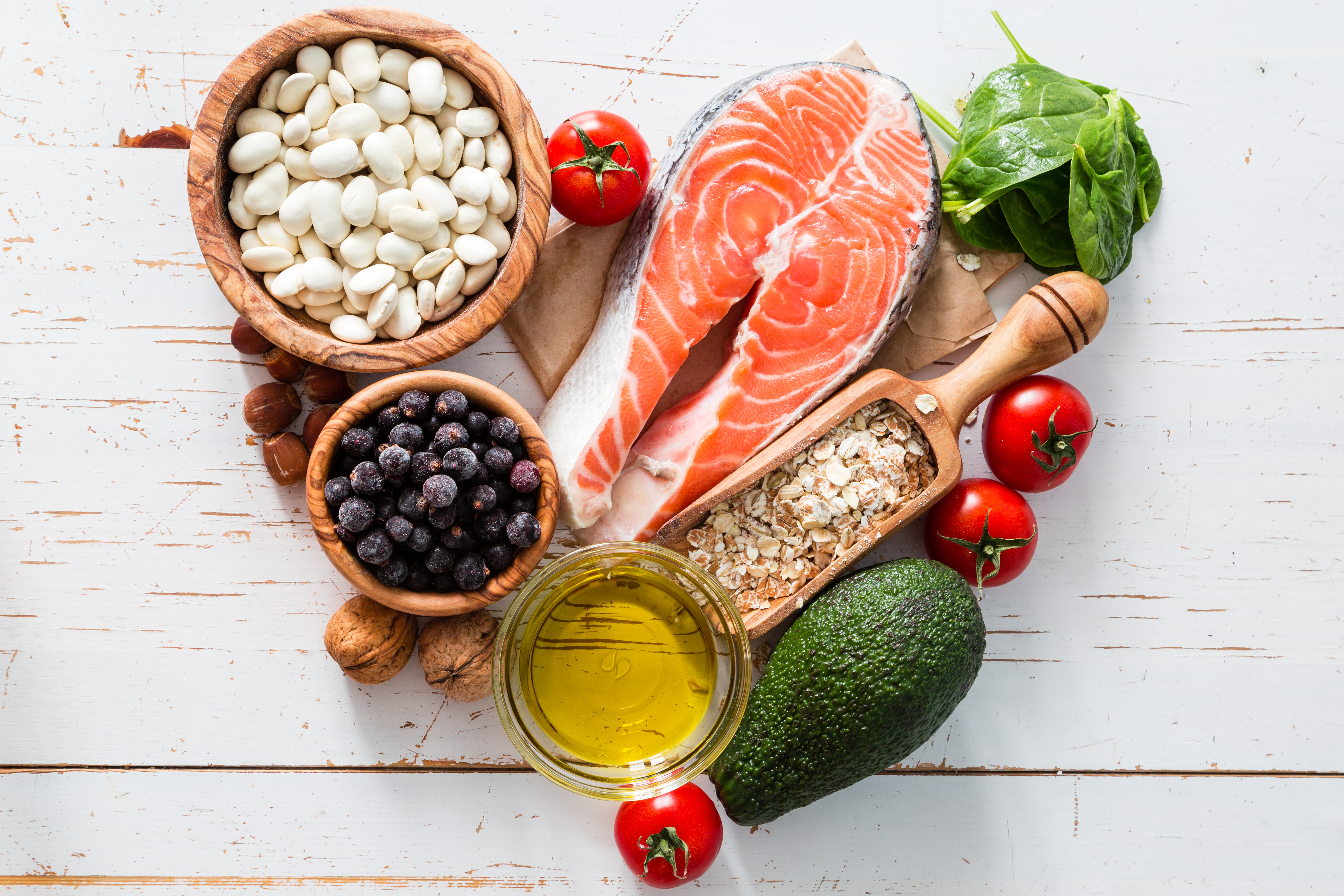Health & Wellness >> Heart Healthy Diet Tips
 To Request an Action Plan to address Low Back Pain Click Here
To Request an Action Plan to address Low Back Pain Click Here
In this video, Dr. Huntoon discusses a unique program he offers called
"Shop with the Doc."
When you have a chronic health concern like Heart Concerns, knowing what to eat and what not to eat will have a dramatic effect on your health.
Would you like to know what you can do to restore health to your heart?
Consider Shop With The Doc!
![]() To Request an Action Plan to
To Request an Action Plan to
Address Heart Healthy Diet Tips Click Here
Heart Healthy Dieting Tips
There is nothing the medical profession will offer you except to meet with a dietitian to discuss your eating habits. They may recommend any of the diet programs out on the market and they may ask you to have weight loss surgery if you have extreme weight management issues. All of this will not empower you to take charge of your weight. What it will do is create the basis for future health concerns, as removing parts of your digestive system while you still need to digest will create problems. Therefore, consider the following:
Eating to Prevent Heart Disease and Boost Heart Health
Weight control and regular exercise are critical for keeping your heart in shape—but the food you eat may matter just as much. A heart-healthy diet can reduce your risk of heart disease or stroke by 80%. By understanding which foods and methods of cooking are healthiest for your heart, you may be able to prevent or manage heart disease and high blood pressure, and take greater control over the quality and length of your life.
You Can Take Steps to Prevent Heart Disease
Heart disease may be the leading killer of men and women, but that doesn’t mean you can’t protect yourself. In addition to exercise, being careful about what you eat—and what you don’t eat—can help you lower cholesterol, control blood pressure and blood sugar levels, and maintain a healthy weight. If you’ve already been diagnosed with heart disease or have high cholesterol or blood pressure, a heart-smart diet can help you better manage these conditions, lowering your risk for heart attack.
Improving your diet is an important step toward preventing heart disease, but you may feel unsure where to begin. Take a look at the big picture: your overall eating patterns are more important than obsessing over individual foods. No single food can make you magically healthy, so your goal can be to incorporate a variety of healthy foods cooked in healthy ways into your diet, and make these habits your new lifestyle.
| Eat More | Eat Less |
| Healthy fats: raw nuts, olive oil, fish oils, flax seeds, or avocados | Trans fats from partially hydrogenated or deep-fried foods; saturated fats from whole-fat dairy or red meat |
| Nutrients: colorful fruits and vegetables—fresh or frozen, prepared without butter | Packaged foods of any kind, especially those high in sodium |
| Fiber: cereals, breads, and pasta made from whole grains or legumes | White or egg breads, granola-type cereals, refined pastas or rice |
| Omega 3 and protein: fish and shellfish, poultry | Red meat, bacon, sausage, fried chicken |
| Calcium and protein: Egg whites, egg substitutes, skim or 1% milk, low-fat or nonfat cheeses or yogurt | Egg yolks, whole or 2 percent milk, whole milk products like cheese or yogurt |
Heart Healthy Diet Tips: Cut Out Trans Fats
 Of all the possible improvements you can make to your diet, limiting saturated fats and cutting out trans fats entirely is perhaps the most important. Both types of fat raise your LDL, or “bad” cholesterol level, which can increase your risk for heart attack and stroke. Luckily, there are many ways to control how much trans fats you take in. Keep these culprits in mind as you cook and make food choices—and learn how to avoid them.
Of all the possible improvements you can make to your diet, limiting saturated fats and cutting out trans fats entirely is perhaps the most important. Both types of fat raise your LDL, or “bad” cholesterol level, which can increase your risk for heart attack and stroke. Luckily, there are many ways to control how much trans fats you take in. Keep these culprits in mind as you cook and make food choices—and learn how to avoid them.
Limit solid fat. Reduce the amount of solid fats like margarine, or shortening you add to food when cooking or serving. Instead of cooking with margerine, for example, flavor your dishes with herbs or lemon juice. You can also limit solid fat by trimming fat off your meat or choosing leaner proteins.
Substitute. Swap out high-fat foods for their lower-fat counterparts. Top your baked potato, for example, with salsa or low-fat yogurt rather than butter, or use low-sugar fruit spread on your toast instead of margarine. When cooking, use liquid oils like olive, safflower, or sunflower, and substitute two egg whites for one whole egg in a recipe.
Be label-savvy. Check food labels on any prepared foods. Many snacks, even those labeled "reduced fat,” may be made with oils containing trans fats. One clue that a food has some trans fat is the phrase "partially hydrogenated.” And look for hidden fat; refried beans may contain lard, or breakfast cereals may have significant amounts of fat.
Change your habits. The best way to avoid saturated or trans fats is to change your lifestyle practices. Instead of chips, snack on fruit or vegetables. Challenge yourself to cook with a limited amount of butter. At restaurants, ask that sauces or dressings be put on the side—or left off altogether.
Not ALL Fats are Bad for Your Heart
While saturated and trans fats are roadblocks to a healthy heart, unsaturated fats are essential for good health. You just have to know the difference.
“Good” fats include:
Omega 3 Fatty Acids. Fatty fish like salmon, trout, or herring and flaxseed, and walnuts all contain polyunsaturated fats that are vital for the body.
Omega 6 Fatty Acids. Vegetable oils, soy nuts, and many types of seeds all contain healthy fats.
Monounsaturated fats. Almonds, cashews, peanuts, pecans, and butters made from these nuts, as well as avocado, are all great sources of “good” fat.
Heart Healthy Diet Tips: Choose Foods that Lower Cholesterol
Unhealthy cholesterol levels increase your risk for heart disease, so keeping yours low is key to a healthier heart. Your diet is central to controlling your cholesterol. Some foods can actually lower your cholesterol, while others only make matters worse.
Avoid Trans Fats. Foods containing high levels of trans fats—such as potato chips and packaged cookies—can increase your cholesterol levels much more significantly than cholesterol- containing foods such as eggs. Trans fat both increase LDL (“bad”) cholesterol. Even worse, trans fat lowers your levels of HDL (“good”) cholesterol.
Make Smart Choices. Choose foods rich in unsaturated fats, fiber, and protein. Fruits, vegetables, fish, beans, nuts, and seeds are all great cholesterol regulators. The best foods for lowering cholesterol are oatmeal, fish, walnuts (and other nuts), olive oil, and foods fortified with sterols or stanols—substances found in plants that help block the absorption of cholesterol.
Remember that Labels can be Deceiving. Navigating food labels can often be complicated since packaged foods with labels like “cholesterol free” or “low cholesterol” aren’t necessarily heart-healthy; they might even contain cholesterol that’s heart-risky. Stick to basics whenever possible: fruit, veggies, nuts, and lean proteins.
Lowering your Cholesterol with Fish or Fish oil supplements. By adding fish like salmon or herring to your diet twice a week, you can significantly lower your cholesterol, and thus your risk for heart attack. Fish contain omega-3 fatty acids, which work like superheroes, doing good deeds for your heart—and your whole body.
Heart Healthy Diet Tips: Steer Clear of Iodized Salt and Processed Foods
Eating a lot of Iodized salt can contribute to high blood pressure, which is a major risk factor for cardiovascular disease. Reducing the Iodized salt in your food is a big part of a heart-healthy diet. The American Heart Association recommends no more than about a teaspoon of salt a day for an adult. That may sound alarmingly small, but there are actually many painless—even delicious—ways to reduce your sodium intake.
Reduce canned or processed foods. Much of the salt you eat comes from canned or processed foods like soups or frozen dinners—even poultry or other meats often have salt added during processing. Eating fresh foods, looking for unsalted meats, and making your own soups or stews can dramatically reduce your sodium intake.
Cook at home, using spices for flavor. Cooking for yourself enables you to have more control over your salt intake. Make use of the many delicious alternatives to salt. Try fresh herbs like basil, thyme, or chives. In the dried spices aisle, you can find alternatives such as allspice, bay leaves, or cumin to flavor your meal without sodium.
Substitute reduced sodium versions, or salt substitutes. Choose your condiments and packaged foods carefully, looking for foods labeled sodium free, low sodium, or unsalted. Better yet, use fresh ingredients and cook without salt.
The DASH diet for lowering blood pressure. The Dietary Approaches to Stop Hypertension, or DASH diet, is a specially designed eating plan to help you lower your blood pressure, which is a major cause of hypertension and stroke. To learn more, download the booklet from the National Heart, Lung, and Blood Institute found in the Resources and References section.
Heart Healthy Diet Tips: Rekindle Home Cooking
It’s very difficult to eat right for your heart when you’re eating out a lot, ordering in, or eating microwave dinners and other processed foods. The good news is that you can learn to make quick, heart healthy meals at home. It’s easier and less time-consuming than you may think.
Heart-healthy grocery shopping and stocking. Creating a heart-friendly diet starts with stocking your fridge with healthy and accessible foods. Prepare a list before you head to the store or farmer’s market, and leave a little time after your trip to set yourself up for success during the week.
Look at labels. While scanning the aisles of a grocery store in the U.S., look for foods displaying the American Heart Association's heart-check mark to spot heart-healthy foods. This logo means that the food has been certified to meet the American Heart Association's criteria for saturated fat and cholesterol. In Australia, look for the Heart Foundation Tick.
Make healthy substitutions. Choose substitutions like 1% or skimmed milk instead of whole milk, and lean meats like chicken and fish in place of ribs or ground meat. These substitutions can save you an entire day’s worth of saturated fat
More About AAMC
About Dr. Huntoon
When Your Health Matters
Click the link for a description of this week's show and a link to the podcast from:
Free Health Care Class Schedule
Classes start at 6: 30 pm
Classes are open to the public
You Must Call 845-561-2225
for reservations

Advanced Alternative Medicine Center
Serving All Your Heath Care Needs ... Naturally!
Dr. Richard A. Huntoon
Pooler Chiropractor
Newburgh Chiropractor

A winner of the 2015 Patients' Choice Awards in Chiropractic - Newburgh, NY
Verified by Opencare.com
Home | Chronic Health Concern | Specific Health Concern | My Child’s Health | Health and Wellness | New Patient Center | Other
Copyright © 2019 All Rights Reserved.






